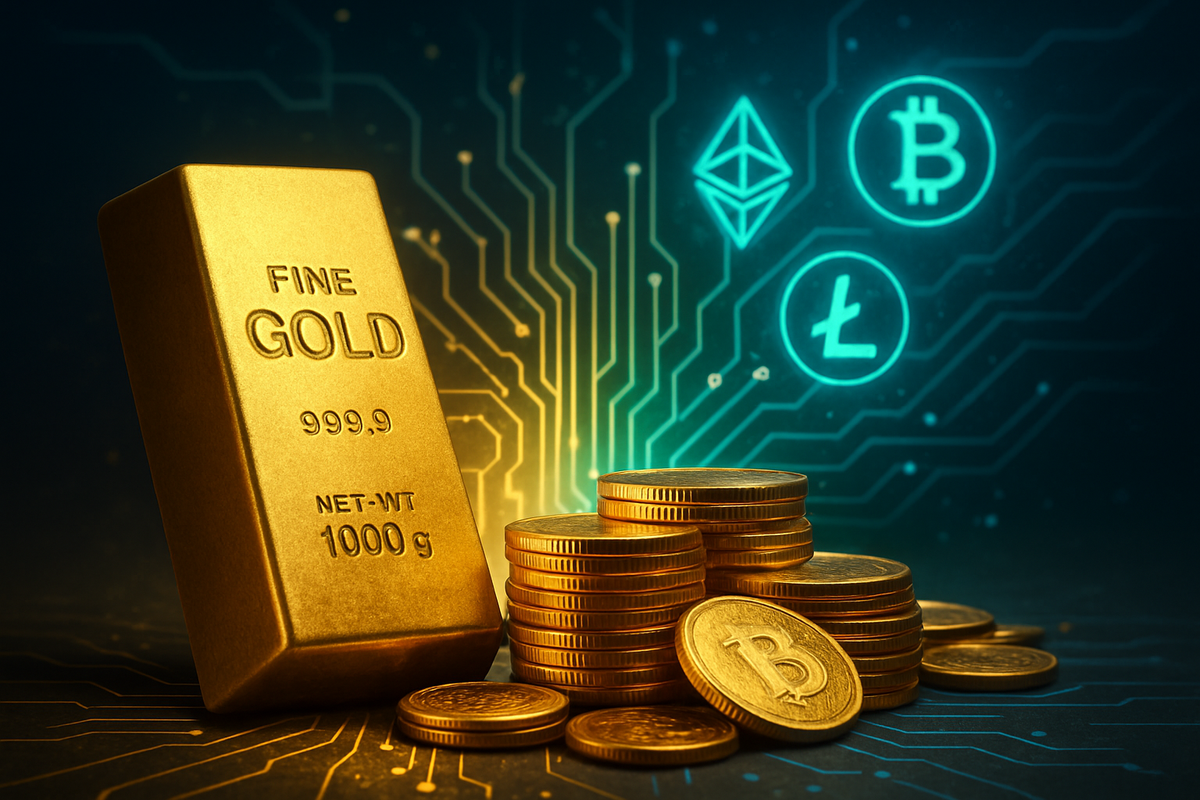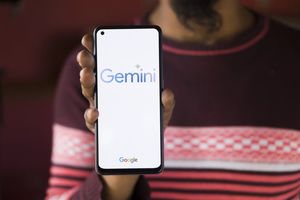
In an increasingly digitized world, the age-old allure of gold is meeting the cutting-edge innovation of cryptocurrency. An emerging trend is seeing investors turn to gold-backed digital assets like PAX Gold (PAXG) to gain exposure to the precious metal. This fusion of traditional safe-haven assets with blockchain technology is reshaping how individuals and institutions perceive and invest in gold, offering unprecedented accessibility, liquidity, and flexibility.
PAXG, issued by the regulated Paxos Trust Company, stands at the forefront of this movement. Each PAXG token is a digital representation of one fine troy ounce of physical gold, securely held in London's esteemed LBMA-certified vaults. This tokenized approach eliminates many of the historical barriers to gold ownership, from cumbersome storage fees to limited divisibility, thereby creating a seamless bridge between the stability of precious metals and the dynamic efficiency of the crypto market.
PAX Gold: A Digital Evolution of a Timeless Asset
PAX Gold (PAXG) was officially launched on September 5, 2019, by Paxos Trust Company, a regulated entity under the New York State Department of Financial Services (NYDFS). This marked a pivotal moment, introducing the first regulated digital gold product to the market. Designed as an ERC-20 token on the Ethereum blockchain, PAXG aimed to democratize gold investment by offering fractional ownership, with investments possible for as little as 0.000001 PAXG. Each token is directly backed, on a 1:1 ratio, by one fine troy ounce of a London Good Delivery gold bar, ensuring its value is intrinsically tied to the real-time market price of physical gold.
From its inception, PAXG garnered significant market attention, with immediate ecosystem adoption and early institutional interest, including a $5 million acquisition by the crypto lending platform Nexo soon after its launch. The token's price has consistently shown a high correlation with the spot price of physical gold, offering a digital asset that mirrors the stability of the precious metal. PAXG proved its utility as a safe-haven asset during the March 2020 liquidity crunch, maintaining its peg and facilitating orderly trading even as traditional gold markets experienced turbulence. Similarly, during the broader crypto winter of 2022, PAXG saw increased trading volumes as investors sought to hedge against market downturns.
The adoption metrics for PAXG have shown steady growth. The number of addresses holding PAXG has approximately quadrupled since 2020, now exceeding 41,000. The total market capitalization for gold-backed tokens, with PAXG being a dominant player (commanding about 50% of the market), surpassed $1.4 billion in early 2025 and recently exceeded $3 billion. Trading volumes for PAXG have also surged, with notable spikes during geopolitical uncertainty. In April 2025, PAXG processed over $800 million in trading volume within a single week, and by September 2025, it recorded a monthly trading volume of $3.2 billion. Most recently, in October 2025, PAXG experienced a substantial price surge, briefly breaking above $4,800 on some platforms and recording all-time high daily volumes exceeding $854 million, partly due to short position liquidations and a broader shift into safe-haven assets amidst market volatility.
Winners and Losers in the Digital Gold Rush
The rise of gold-backed cryptocurrencies like PAXG is creating discernible shifts in the financial landscape, presenting both opportunities and challenges for various market players.
Companies Poised to Win:
- Paxos Trust Company: As the issuer of PAXG, Paxos Trust Company generates revenue through creation and redemption fees, which are one-time and volume-based. Their strategic choice of zero ongoing custody fees for holders attracts investors. Regulated by the NYDFS, Paxos (NYDFS: PAXOS) is positioned as a pioneering leader in asset tokenization, bridging traditional finance with the digital asset space and enhancing trust through robust regulatory oversight.
- Cryptocurrency Exchanges: Platforms like Coinbase Global, Inc. (NASDAQ: COIN), Binance, Kraken, and Gemini profit from increased trading fees and user activity as PAXG's trading volume grows. Listing PAXG provides a competitive edge by offering a stable, gold-backed asset, attracting investors seeking hedges against volatility in the broader crypto market.
- Institutional Custodians and Crypto Infrastructure Providers: Companies such as BitGo and Fireblocks benefit from the demand for secure storage and transfer solutions for digital assets. As institutions increasingly invest in PAXG, the need for sophisticated custody services grows, generating fees for secure storage and enterprise-grade security.
- Traditional Gold Vaulting and Logistics Providers: While PAXG reduces the need for individual physical storage, companies like Brink's Company (NYSE: BCO) benefit as Paxos partners with them to store the underlying physical gold. This provides a steady demand for their high-security vaulting services, ensuring their relevance in the evolving gold market.
- Decentralized Finance (DeFi) Platforms: Platforms like Aave, Uniswap, and MakerDAO thrive on liquidity and token utility. PAXG can be used as collateral for loans, in yield farming, or for trading within decentralized exchanges, increasing transaction volumes and associated fees. Its integration enhances the "real-world asset" (RWA) narrative in DeFi, making these platforms more robust.
Companies Likely to Face Challenges:
- Traditional Gold Exchange-Traded Funds (ETFs): Gold ETFs like SPDR Gold Shares (NYSE Arca: GLD) and iShares Gold Trust (NYSE Arca: IAU) generate revenue through annual management fees. PAXG poses a direct competitive threat by offering direct ownership of physical gold, no ongoing custody fees, fractional ownership, 24/7 trading, and easier physical redemption. As investors shift to more cost-effective and flexible alternatives, gold ETFs could see their market share erode.
- Traditional Physical Gold Dealers and Brokers: Private entities like Kitco Metals Inc. and JM Bullion earn revenue through premiums on gold sales and storage fees. PAXG removes many traditional barriers to gold investment, potentially leading to a decline in demand for physical gold purchases through traditional channels, especially for smaller investors.
- Traditional Financial Institutions Slow to Adapt: Major banks and wealth management firms like JPMorgan Chase & Co. (NYSE: JPM) and Bank of America Corporation (NYSE: BAC) risk losing market share if clients move assets to digital platforms for gold exposure. Their business models, reliant on traditional asset management fees and brokerage services, could be impacted if they fail to integrate digital asset solutions or offer access to tokenized assets like PAXG.
Wider Significance: Gold's Digital Transformation in a Tokenized World
The emergence of gold-backed cryptocurrencies like PAXG is more than just a niche financial innovation; it represents a significant step in the broader trend of asset tokenization and the integration of Real-World Assets (RWAs) into Decentralized Finance (DeFi). PAXG is a prime example of how physical assets can be represented as digital tokens on a blockchain, bringing unprecedented accessibility, liquidity, and divisibility to gold investment. This aligns with a global movement towards digitizing assets, from real estate to art, making them programmable and tradable on a global, 24/7 basis.
The ripple effects of this trend are profound. In the traditional gold market, PAXG directly competes with gold ETFs and physical gold providers, offering a more dynamic and flexible alternative. However, it also creates opportunities for traditional secure storage providers, like Brink's, who partner with issuers like Paxos. Within the cryptocurrency ecosystem, gold-backed tokens challenge Bitcoin's narrative as "digital gold" by offering a less volatile, directly asset-backed alternative, potentially attracting more conservative institutional capital. They also provide an inflation-hedging alternative to fiat-backed stablecoins, especially in economies facing currency devaluation.
Regulatory and policy implications are a critical aspect of this evolving landscape. While Paxos (NYDFS: PAXOS) operates under the robust oversight of the NYDFS, the global regulatory environment for gold-backed tokens remains fragmented. Frameworks like the EU's Markets in Crypto-Assets (MiCA) are aiming to provide clarity, but a unified federal approach in the United States is still needed. Key concerns include consumer protection, ensuring 1:1 physical backing, robust Anti-Money Laundering (AML) and Know Your Customer (KYC) compliance, and clear taxation guidelines. The introduction of counterparty risk, inherent in trusting the issuer to maintain reserves, necessitates strong regulatory oversight to build and maintain trust.
Historically, the concept of value-backed digital assets echoes past financial innovations. It draws parallels to the gold standard, where currencies were tied to gold for stability. It also brings to mind early digital gold attempts like E-Gold from the 1990s, highlighting the long-standing desire for digital representations of gold and the importance of regulatory compliance that modern projects like PAXG prioritize. Furthermore, gold-backed cryptocurrencies can be seen as an evolution of gold ETFs, taking the accessibility provided by ETFs a step further by offering direct ownership, fractionalization, and seamless integration into digital financial systems.
What Comes Next: The Future Trajectory of Digital Gold
The future outlook for gold-backed cryptocurrencies like PAXG is dynamic, shaped by ongoing technological advancements, evolving market acceptance, and the persistent global economic landscape. In the short term, PAXG is likely to continue its ascent as a preferred safe-haven asset, especially amidst sustained global economic uncertainties, inflationary pressures, and geopolitical tensions. Its role as a hedge against currency devaluation and inflation will likely drive increased institutional adoption, with wealth managers and family offices increasingly integrating tokenized gold into diversified portfolios. The growing integration of PAXG into DeFi ecosystems, as collateral for loans on platforms like Aave and Compound, will further enhance its utility and demand.
Looking further ahead, the long-term possibilities for gold-backed cryptocurrencies suggest a transformative impact on global finance. Increased accessibility through fractional ownership will continue to democratize gold investment, reaching a broader global audience. The enhanced liquidity and efficiency offered by tokenization, including 24/7 trading and instant settlement, will reshape how gold is traded and utilized in cross-border transactions, potentially challenging traditional financial systems. Future technological innovations are expected to include automated rebalancing, real-time audits, and expanded interoperability across multiple blockchains (beyond Ethereum to Solana, Avalanche, Polygon), further reducing transaction fees and improving accessibility. Long-term price projections for PAXG are generally bullish, with some estimates suggesting significant appreciation by 2030 and beyond.
Strategic pivots will be crucial for all market participants. Issuers like Paxos (NYDFS: PAXOS) must continue to prioritize transparency through robust legal frameworks and independent audits, while navigating the complex and fragmented global regulatory landscape. Expanding blockchain interoperability and deepening ties with traditional gold markets will be key. Investors, on the other hand, must conduct thorough due diligence on custodial risks and understand that while less volatile than unbacked cryptocurrencies, PAXG's value is still tied to gold's inherent price fluctuations. For regulators, developing clear, harmonized global frameworks for issuing, trading, and custody of gold tokens, addressing legal classifications, and mitigating counterparty and technical risks will be paramount to fostering widespread, secure adoption.
Emerging market opportunities are particularly significant, as gold-backed stablecoins offer a stable, transparent way to preserve wealth and hedge against high inflation and currency devaluation in economies facing instability. They can facilitate quicker, lower-cost international transfers and promote financial inclusion in regions with limited traditional banking access. However, challenges include building widespread market acceptance and trust, overcoming regulatory hurdles, and managing competition from other gold-backed cryptocurrencies or even state-backed digital gold initiatives. The convergence of gold and crypto is moving towards a scenario where both assets serve as complementary components in diversified portfolios, with tokenized gold potentially becoming a mainstream investment and a crucial asset for backing stablecoins, thereby challenging existing global trade structures and even the dominance of fiat currencies.
The Dawn of Digital Gold: A New Era for Investment
The emerging trend of buying gold with cryptocurrency, exemplified by PAX Gold (PAXG), marks a significant milestone in the evolution of financial markets. It successfully blends the enduring stability and safe-haven properties of physical gold with the efficiency, accessibility, and programmability of blockchain technology. This innovation has democratized gold ownership, offering fractional investment, 24/7 trading, and seamless integration into the burgeoning decentralized finance ecosystem, all while being backed by physical, audited gold and regulated by the NYDFS.
Moving forward, the market for gold-backed cryptocurrencies is poised for continued growth, driven by increasing institutional interest, the need for inflation hedges in an uncertain global economy, and the ongoing digitization of assets. While challenges remain, particularly in harmonizing global regulatory frameworks and addressing potential scalability issues, the fundamental value proposition of digital gold is compelling. It offers a transparent, liquid, and cost-effective alternative to traditional gold investments, appealing to both crypto natives seeking stability and traditional investors looking for a secure entry into the digital asset space.
The lasting impact of PAXG and similar tokens will likely be their role in accelerating the convergence of traditional finance and the crypto market, setting a precedent for the tokenization of other real-world assets. Investors should closely watch for further regulatory clarity, particularly at a federal and international level, as well as the continued expansion of PAXG's integration into more DeFi protocols and its adoption by major financial institutions. The trajectory of gold-backed cryptocurrencies suggests a future where digital gold becomes a core pillar in diversified, future-ready investment portfolios, redefining how we perceive and interact with one of humanity's oldest stores of value.
This content is intended for informational purposes only and is not financial advice





